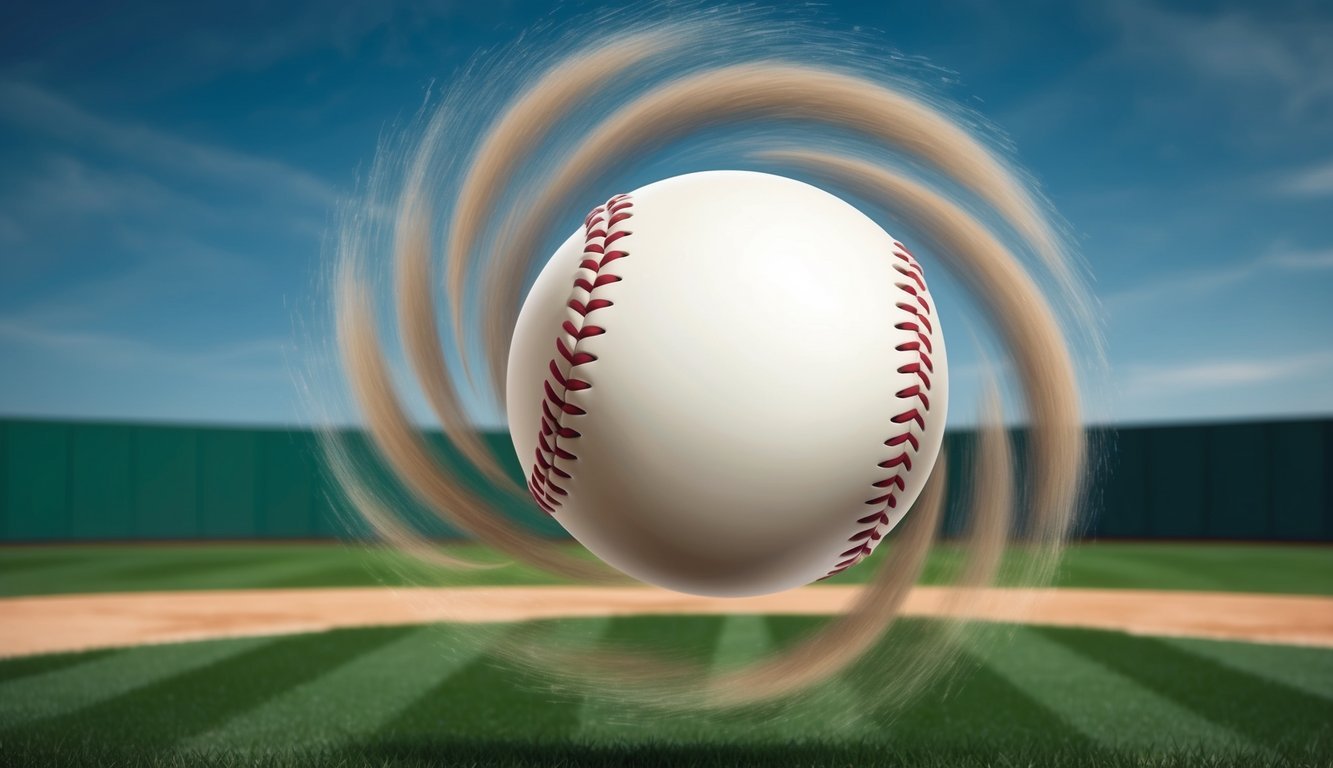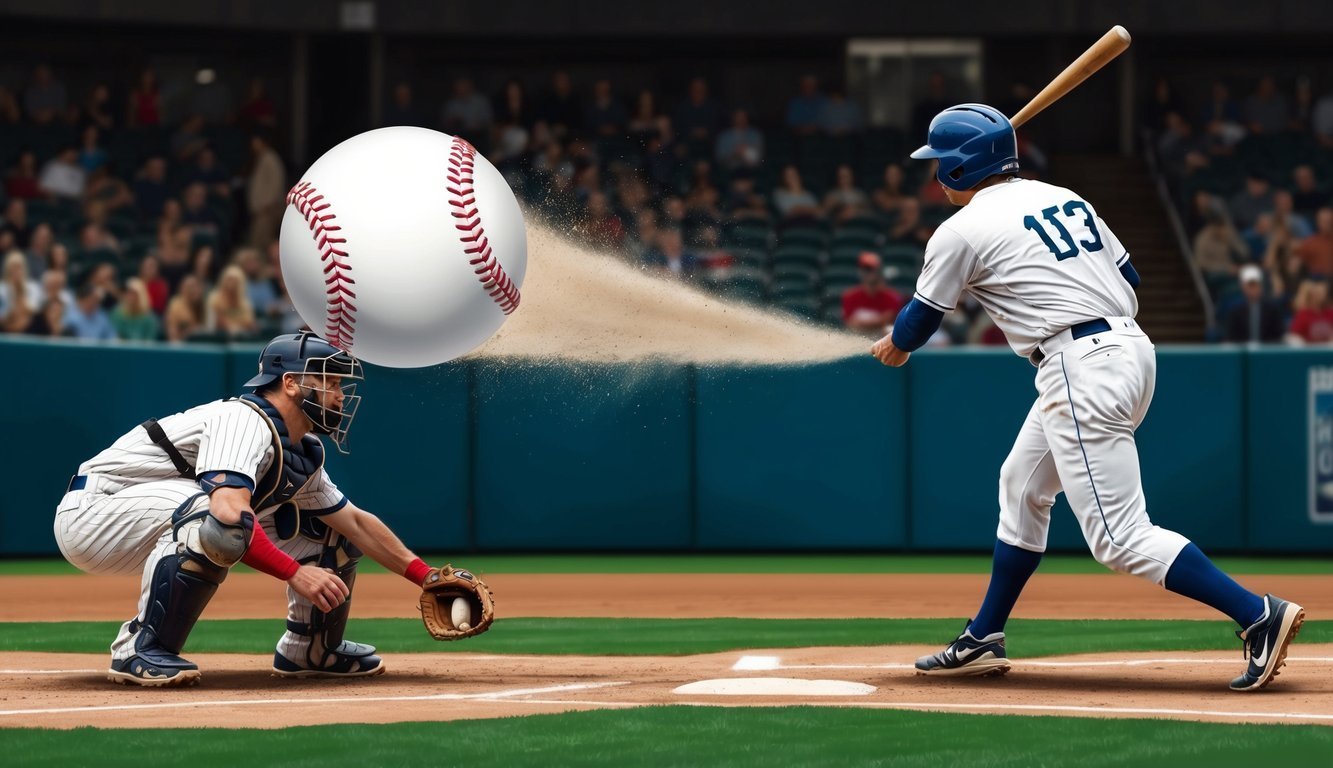The changeup is a deceptive pitch that can be a pitcher’s secret weapon on the mound.
This off-speed pitch looks like a fastball coming out of the pitcher’s hand but arrives at the plate much slower, throwing off the batter’s timing.
A well-executed changeup can make even the most skilled hitters look foolish, swinging too early and missing the ball entirely.
Mastering the changeup takes practice and finesse.
Pitchers grip the ball with three or four fingers instead of two, reducing its velocity while maintaining arm speed to sell the illusion.
The pitch often features arm-side movement and sink, making it even tougher for batters to square up.
In recent years, the changeup has evolved into one of the most effective pitches in baseball.
Many successful pitchers rely on it as a go-to offering, using it to keep hitters guessing and off-balance.
As batters have adapted to high-velocity fastballs, the changeup has become an invaluable tool for pitchers looking to disrupt timing and generate weak contact.
Fundamentals of the Changeup
The changeup is a deceptive off-speed pitch that plays a crucial role in a pitcher’s arsenal.
It relies on subtle differences in grip, arm speed, and release to fool batters expecting a fastball.
Understanding the Changeup
A changeup aims to disrupt the hitter’s timing by mimicking a fastball’s arm speed and trajectory while traveling significantly slower.
The pitch typically arrives 8-12 mph slower than a fastball, causing batters to swing early.
This speed differential is key to its effectiveness.
Changeups often feature late downward movement, further enhancing their deceptiveness.
The pitch’s success hinges on a pitcher’s ability to maintain consistent arm speed and release point with their fastball, making it difficult for batters to distinguish between the two pitches until it’s too late.
The Role of Grip and Pressure
Grip and finger pressure are vital components of throwing an effective changeup.
Various grips exist, with the circle change and three-finger change being popular options.
The circle change involves forming a circle with the thumb and index finger on the side of the ball.
Finger placement and pressure distribution on the ball influence the pitch’s speed and movement.
Pitchers often apply more pressure with their ring and pinky fingers to reduce velocity.
Experimenting with different grips and pressure points allows pitchers to find the most comfortable and effective technique for their throwing style.
Changeup Variations
Several changeup variations exist, each with unique characteristics:
- Circle changeup: Features a circular grip and good movement
- Straight change: Minimal movement but significant speed reduction
- Palmball: Held deep in the palm for extreme speed reduction
Some pitchers, like Trevor Hoffman, have developed signature changeups.
Hoffman’s modified circle change emphasized finger pressure on the ball’s outside, creating late downward movement.
The “Airbender” changeup, thrown by Devin Williams, spins at an impressive 2800 RPM, much higher than the MLB average of 1750 RPM.
This high-spin changeup resulted in a .185 batting average against and a 43.9% whiff rate in 2022.
Mechanics of the Changeup Delivery
The changeup’s effectiveness lies in its deceptive mechanics.
Mastering this pitch requires careful attention to arm action, release point, and arm speed.
Arm Action and Release
The key to a successful changeup is maintaining the same arm action as a fastball.
Pitchers should keep their arm speed consistent throughout the delivery.
The ball is gripped deeper in the hand, often with three fingers instead of two.
This grip creates friction, slowing the ball’s rotation.
At release, pitchers slightly turn the ball over, creating a tumbling action.
The release point should be identical to other pitches.
Some pitchers find success by pushing the ball slightly forward at release, further reducing velocity.
Arm Slot and Speed
Arm slot plays a crucial role in the changeup’s deception.
Pitchers must maintain the same arm slot used for their fastball.
Any variation can tip off batters.
The throwing arm should follow the same path and timing as other pitches.
Arm speed is equally important.
Many pitchers make the mistake of slowing their arm to reduce pitch velocity.
Instead, they should focus on manipulating the ball with their fingers while keeping arm speed consistent.
This approach helps sell the pitch as a fastball until the last moment.
Strategies for Effective Changeups

Mastering the changeup requires a combination of deception, observation, and dedicated practice.
Pitchers can elevate their game by focusing on these key elements to keep batters guessing.
Deception Techniques
Selling the changeup as a fastball is crucial.
Pitchers should maintain the same arm speed and motion used for their fastball.
This consistency tricks batters into expecting a faster pitch.
The grip is hidden until the last moment to prevent tipping off the hitter.
Some pitchers add a slight pronation of the wrist at release to create more movement.
Varying the speed and location of changeups keeps hitters off-balance.
Mixing in changeups after consecutive fastballs can be particularly effective.
Reading Hitters’ Cues
Observing hitter tendencies helps determine when to throw a changeup.
Pitchers watch for batters who struggle with timing or tend to swing early.
Noticing if a hitter is creeping forward in the box can signal they’re anticipating a fastball.
This presents an opportunity to throw a well-timed changeup.
By recognizing this subtle shift in stance, a pitcher can not only throw a changeup but also incorporate eephus pitch mechanics and strategy into their game plan.
The slow, high-arcing eephus pitch can catch a forward-leaning hitter off guard, disrupting their timing completely.
This unexpected pitch, when executed effectively, can serve as a valuable tool in a pitcher’s arsenal, keeping batters guessing while leveraging their anticipation against them.
Studying game footage and scouting reports provides insights into individual hitter weaknesses against off-speed pitches.
Practice and Training
Consistent practice is key to developing a reliable changeup.
Pitchers can use target drills to improve accuracy and control.
• Set up a small strike zone target
• Focus on maintaining fastball arm speed
• Work on achieving desired downward movement
Bullpen sessions should include changeups in various counts and situations.
This builds confidence in game-like scenarios.
Video analysis helps pitchers refine their mechanics and ensure their changeup delivery matches their fastball.
Coaches can provide feedback on arm speed and release point consistency.
Physical Dynamics of Changeup Pitches

The changeup pitch relies on subtle physical forces to deceive batters.
Its effectiveness stems from a combination of reduced velocity and complex aerodynamic interactions.
Velocity and Movement
Changeups typically travel 10-15 mph slower than a pitcher’s fastball.
This speed differential is crucial for disrupting a batter’s timing.
A well-executed changeup mimics the arm speed and release point of a fastball, creating the illusion of a faster pitch.
The grip plays a key role in generating movement.
Pitchers often use a “circle change” or “palm ball” grip to reduce spin and velocity.
This altered grip causes the ball to fade or drop as it approaches the plate.
Some changeups exhibit a slight arm-side run, moving away from same-handed batters.
This movement, combined with the slower speed, makes the pitch challenging to square up.
Spin and Flight Dynamics
Changeups typically have lower spin rates compared to fastballs.
This reduced spin contributes to the pitch’s distinctive movement patterns.
The Magnus effect, which creates lift on spinning objects, is less pronounced on changeups.
Spin direction impacts the pitch’s trajectory.
Some changeups feature backspin, causing the ball to resist downward movement.
Others utilize a combination of side spin and backspin, producing a screwball-like action.
Spin efficiency plays a role in the pitch’s effectiveness.
Lower spin efficiency can lead to more unpredictable movement, making it harder for batters to track.
This “seam-shifted wake” effect causes air to flow asymmetrically around the ball, enhancing its movement.
Historical and Remarkable Changeup Pitchers

Tom Glavine is one of the most notable changeup pitchers in baseball history.
His masterful use of the pitch helped him achieve 20-win seasons for three consecutive years.
Glavine’s changeup was a key weapon in his arsenal.
It contributed to his Hall of Fame career and World Series MVP award.
He also formed part of one of the greatest rotations in MLB history with the Atlanta Braves.
Greg Maddux, another Hall of Famer, also relied heavily on his changeup.
Known for his pinpoint control, Maddux used the pitch to keep hitters off-balance and guessing throughout his illustrious career.
Stephen Strasburg developed a devastating changeup early in his career.
This pitch, along with his blazing fastball, made him one of the most feared young pitchers in the game.
Trevor Hoffman’s career took an interesting turn when he mastered the changeup.
Originally a shortstop, Hoffman transformed into an elite closer by developing this pitch to complement his declining fastball velocity.
Other notable changeup artists include:
- Pedro Martinez
- Johan Santana
- Cole Hamels
- Felix Hernandez
These pitchers all used the changeup to great effect, fooling batters and racking up impressive strikeout totals throughout their careers.
